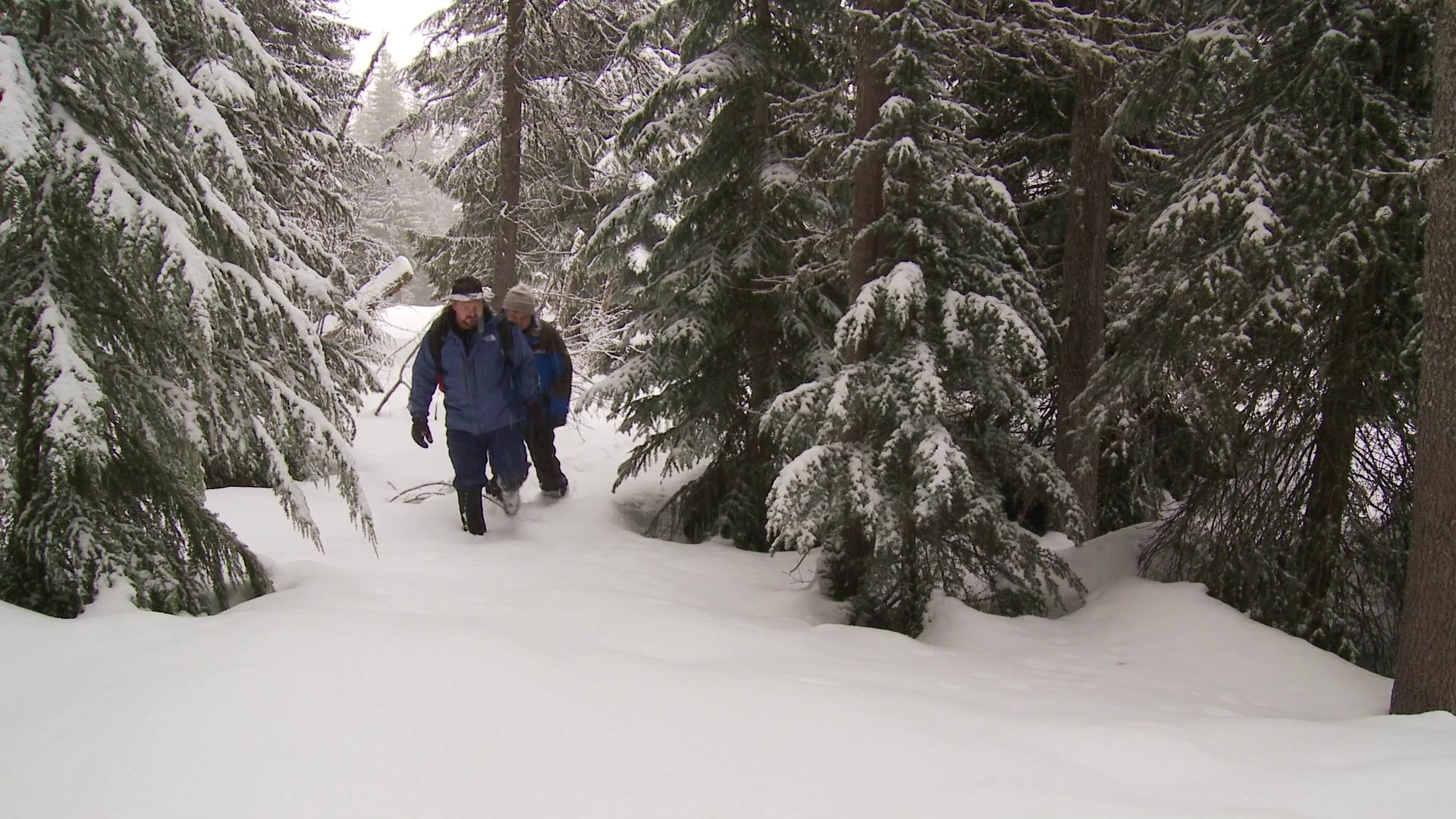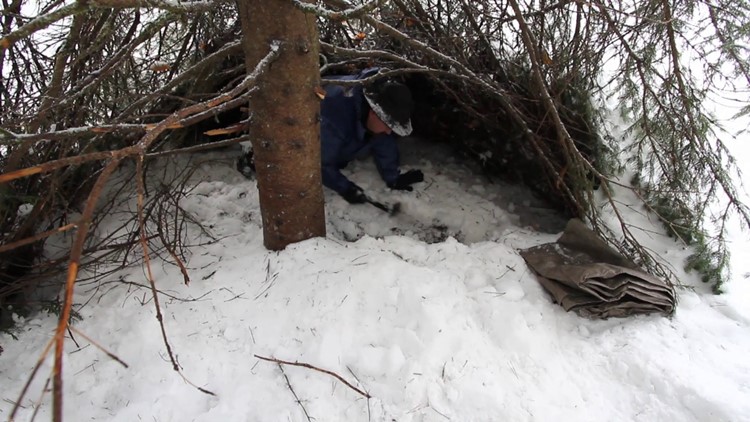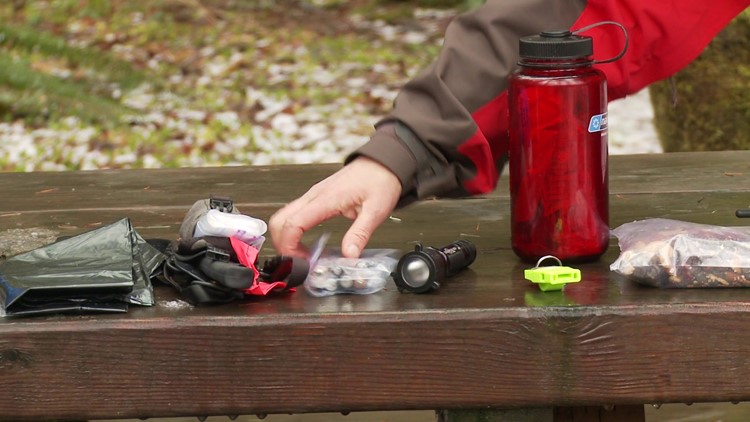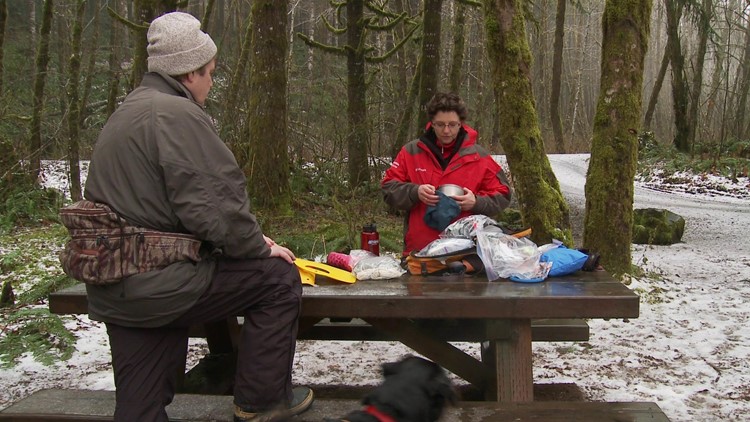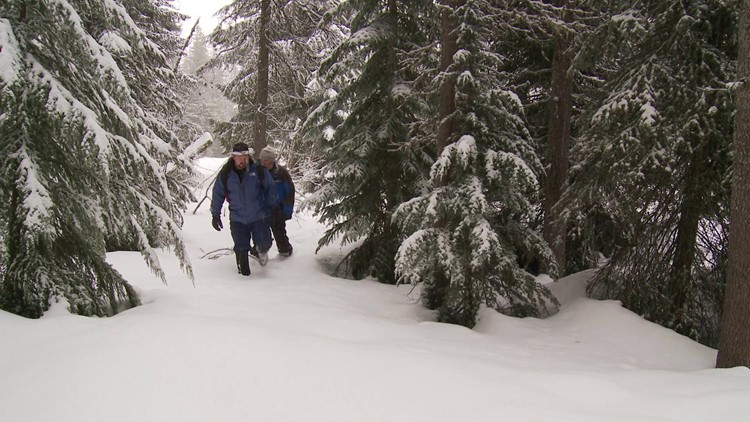PORTLAND, Ore. — While Oregon is blessed with a mild climate most of the year, winter can turn from the sublime to downright dangerous.
Jim Peters is a survival pro – a search and rescue volunteer for nearly 25 years – who said that the folk he’s found had one thing in common. They forgot to ask 'what if'?
"What if I twist my ankle? What if I have to stay out overnight? What if I should need a shelter or a way of making a warming fire? Would I know how to do it in the cold?"
Peters added that the answers demand preparation for the worst that Mother Nature serves up, even if it’s just a day of family fun in the snow.
For example, would you know how to seek simple shelter? Peters acted quickly when I put him to the that test. He scanned the trees, specifically the tree wells that the deep snow had created.
"There, see that natural little cave in there," he said as he pointed to a nearby spruce tree with its branches bowed low from the weight of fresh snow. "You can crawl right in there and could probably rest in there just the way it is."
Peters said that a tree well with branches bent low keep out overhead snow and can protect you from energy-sapping winds.
"Plus, there’s a lot of needles down here on the ground. Really thick and spongy. Excellent to sleep on and I won’t be sleeping on the snow!"
He pulled a lightweight tarp from inside his daypack, unfolded it and laid it across the ground.
"This will keep me from getting wet and if there’s a little bit of wind that does come though here, this will help block it too."
Grant's Getaways: Staying safe in the snow
Peters said that the right clothing is critical for staying warm, too. He insisted that you should never wear cotton because it won’t wick moisture away, but that you should rely on a base layer of polypropylene or other synthetic wear.
"It has a wicking property about it that pulls moisture away from the skin into your insulating layer of clothing and for that I use thick fleece."
Peters wears a waterproof shell over the fleece because it also blocks the wind. He added that you should not forget a hat! If your head is uncovered, up to half your body heat can escape.
"Keeping your ears covered is as important as fingers and toes because when they get cold, it starts to affect your attitude. You want to have a positive mental attitude."
Attitude means attention to preparation and that equals energy conservation.
"You don’t want to spend a lot of time building something that takes a lot of effort and energy,” said Peters. "You want to save your energy as much as possible. Find something Mother Nature already started. That’s the way to go."
Sharon Ward is another search volunteer who partners with her rescue dogs to find people who get lost in the outdoors.
She said that when people head for snow country, anything can happen.
"Often we’ll get someone who has gone out for a fun day in the woods and a foot or two of snow comes down and they can’t drive out. They’re stuck!"
And when the sun goes down, getting stuck takes on a whole new dimension.
"If it’s dark," said Ward, "there are many dangers. You could fall in a creek, fall off a ledge. We’ve had people who walked straight off ridges at night, so at night it’s very dangerous to travel in the woods.”
Ward is a big believer in carrying essentials to help you make it through a night or two; items that are packed away in your rig like water in a shatter-proof lightweight container of plastic or aluminum.
She added that you should carry food, even as simple as nuts and raisins or other high-energy food.
Don’t forget a whistle to signal for help, a lamp or flashlight with spare batteries, a knife and some source of heat.
"I always bring hand warmers in the winter," said Ward. "They are wonderful and inexpensive and you can put them in your boots or mittens to warm you up."
She always carries a small first-aid kit and keeps everything in a small daypack or fanny pack stored away in the vehicle. If you leave the car on a hike, you can take your essentials with you.
If you do these small things, you’ll be well on your way toward surviving your time should conditions change and you get stuck.
Search and rescue experts agree it’s that it's the little things added together that make a big difference in your ability to survive an unexpected turn of events.
You should also check the weather and be sure of the forecast. Leave a note with someone, a friend or family member, that says where you’re going and when you expect to return. Pack some survival essentials and keep them in your vehicle either in a daypack or fanny pack.
All of this may just help you through an emergency in the great Oregon outdoors.
Be sure to follow my Oregon adventures via the new Grant’s Getaways Podcast. Each segment is a story-telling session where I relate behind the scenes stories from four decades of travel and television reporting.
You can also learn more about many of my favorite Oregon travels and adventures in the Grant’s Getaways book series, including:
"Grants Getaways I," Photography by Steve Terrill
"Grant's Getaways II," Photography by Steve Terrill
"Grant’s Getaways: 101 Oregon Adventures," Photography by Jeff Kastner
"Grant’s Getaways: Guide to Wildlife Watching in Oregon," Photography by Jeff Kastner
"Grant’s Getaways: Oregon Adventures with the Kids," Photography by Jeff Kastner
The collection offers hundreds of outdoor activities across Oregon and promises to engage a kid of any age.
My next book, "Grant’s Getaways: Another 101 Oregon Adventures" will be published in November

